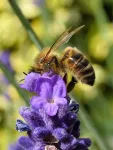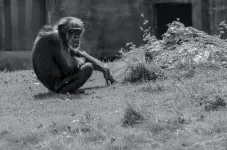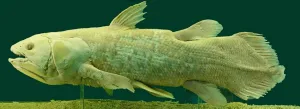(Press-News.org) As abundant and widespread bees, it is common to see both bumble bees and honey bees foraging on the same flower species during the summer, whether in Britain or many other countries.
Yet researchers at the Laboratory of Apiculture and Social Insects (LASI) at the University of Sussex, have found that different bees dominate particular flower species and revealed why.
By studying 22 flower species in southern England and analysing the behaviour of more than 1000 bees, they found that 'energy efficiency' is a key factor when it comes to mediating competition.
Bee bodyweight and the rate at which a bee visits flowers determine how energy efficient they are. Bodyweight determines the energy used while flying and walking between flowers, with a bee that is twice as heavy using twice as much energy. The rate at which a bee visits flowers, the number of flowers per minute, determines how much nectar, and therefore energy, it collects. Together, the ratio of these factors determines bee foraging energy efficiency.
Professor of Apiculture, Francis Ratnieks, said: "While they forage on the same flowers, frequently we find that bumble bees will outnumber honey bees on a particular flower species, while the reverse will be true on a different species growing nearby.
"What was remarkable was that differences in foraging energy efficiency explained almost fully why bumble bees predominated on some flower species and honey bees on others.
"In essence, bumble bees have an advantage over honey bees in being faster at visiting flowers, so can gather more nectar (energy), but a disadvantage in being larger, and so using more of the nectar energy to power their foraging. On some flower species this gave an overall advantage to bumble bees, but on others to honey bees."
In the study, published in the journal Ecology, the researchers used stopwatches to determine how many flowers a bee visited in one minute. Using a portable electronic balance to weigh each bee, researchers found that, on average, bumble bees are almost twice as heavy as the honey bees. This means that they use almost twice as much energy as honey bees. The stopwatch results showed that they visit flowers at twice the rate of honey bees, which compensate in terms of energy efficiency.
On some flower species such as lavender, where bumble bees dominated, visiting flowers at almost three times the rate of honeybees.
The differences in the morphology of flowers impacted greatly on how energy efficient the two bee types were. Ling heather, with its mass of small flowers was better suited to the nimbler honey bee. By contrast, Erica heather, which researchers found growing beside the ling heather in the same nature reserve, has large bell shaped flowers and was better suited to bumble bees.
Author Dr Nick Balfour said: "The energy efficiency of foraging is particularly important to bees. The research showed that the bees were walking (and flying) a challenging energy tightrope; half the energy they obtained from the nectar was expended in its collection."
Energy (provided by nectar for bees) is a fundamental need, but the fact that honey bees and bumble bees do not compete head on for nectar is reassuring in terms of conservation and co-existence.
Prof Ratnieks explained: "Bumble bees have a foraging advantage on some plants, and predominate on them, while honey bees have an advantage on others and predominate on these.
"Bee conservation therefore benefits from flower diversity, so that should certainly be a focus on bee conservation efforts. But fortunately, flowering plants are diverse."
The research team, which included Sussex PhD student Kyle Shackleton, Life Sciences undergraduates Natalie A. Arscott, Kimberley Roll-Baldwin and Anthony Bracuti, and Italian volunteer, Gioelle Toselli, studied flower species in a variety of local locations. This included a nature reserve, the wider countryside, Brighton parks, Prof Ratnieks's own garden and a flower bed outside Sussex House on the University campus.
Dr Balfour said: "Whether you have a window box, allotment or a garden, planting a variety of summer-blooming flowers or cutting your grass less often can really help pollinators during late summer."
INFORMATION:
Space cooling already accounts for 14% of residential electricity demand in Brazil, and it is expected to increase further because of climate change.
Very few studies investigate the relationship between climate change, cooling needs, and electricity demand. In a new study in Energy and Buildings, a team of researchers from Universidade Federal do Rio de Janeiro and CMCC@Ca'Foscari - a joint program of Ca'Foscari University of Venice and CMCC Foundation - investigate how climate and income during the period 1970-2010 shaped cooling services in Brazil. This historical relationship allows projecting the resulting energy demand for cooling services across three warming scenarios: +1.5°C, +2°C, +4°C.
The study shows ...
WEST LAFAYETTE, Ind. - Emerging robotics technology may soon help construction companies and contractors create buildings in less time at higher quality and at lower costs.
Purdue University innovators developed and are testing a novel construction robotic system that uses an innovative mechanical design with advances in computer vision sensing technology to work in a construction setting.
The technology was developed with support from the National Science Foundation.
"Our work helps to address workforce shortages in the construction industry by automating key construction operations," said Jiansong Zhang, an assistant professor of construction ...
The findings add to current knowledge of how insects fly and keep stable in the air. They could also help to inspire new designs in small aerial vehicles like drones, which can be useful for search-and-rescue attempts and building inspection.
Our colourful sunny-day companions can glide, fly backwards, and travel up to 54 km/h when hunting prey or escaping predators - but like any flying creature, they can be thrown off balance and even find themselves upside down.
Many land-based animals like cats, and aerial animals like hoverflies, rotate themselves around a head-to-tail ...
During a study with captive vampire bats at the Smithsonian Tropical Research Institute (STRI) in Panama, a young vampire bat pup was adopted by an unrelated female after its mother died. Although this observation was not the first report of adoption in vampire bats, it is uniquely contextualized by more than 100 days of surveillance-camera footage. This footage captured by STRI research associate Gerry Carter's lab at Ohio State University reveals intimate details about the changing social relationships between the mother, the pup and the adoptive mother throughout their time in captivity.
"The adoption took place after a very sad but ultimately serendipitous occurrence," ...
Adopting policies that are consistent with achieving the Paris Agreement and prioritise health, could save 6.4 million lives due to better diet, 1.6 million lives due to cleaner air, and 2.1 million lives due to increased exercise, per year, across nine countries.
New research from The Lancet Countdown on Health and Climate Change published in a special issue of The Lancet Planetary Health journal highlights the benefits to health if countries adopt climate plans - Nationally Determined Contributions (NDCs) - that are consistent with the Paris Agreement aim of limiting warming to "well below 2°C". [1,2]
The countries considered in the study represent ...
The notion of social distancing rose to public prominence approximately a year ago, when health officials began recommending it as a way to slow the spread of the novel SARS-CoV-2 virus. Despite the novelty of the concept among many contemporary human audiences, social distancing has considerable precedent among animals.
Writing in BioScience, Mark Butler of Florida International University and Donald C. Behringer of the University of Florida outline the role of social distancing in nature and compare it with its human counterpart. They describe numerous animals in which distancing has evolved, including guppies, chimpanzees, birds, ants, and mice, among many others. ...
The capture of the first living Coelacanth, a mighty ocean predator, off the coast of South Africa caused quite a stir in 1938, 65 million years after its supposed extinction. It became known as a "living fossil" owing to its anatomy looking almost identical to the fossil record. But while the Coelacanth's body may have changed little, its genome tells another story.
Toronto scientists have now revealed that the African Coelacanth, Latimeria chalumnae, gained 62 new genes through encounters with other species 10 million years ago. Their findings are reported in the journal Molecular Biology ...
Headlines like "Black Friday Shoppers Trampled in New York" and popular television shows such as "Extreme Couponing" remind us how crazy consumers can get about retail sales promotions. This enthusiasm for getting bargains has been termed "deal proneness."
Past research has indicated that, to some degree, people become deal prone through being taught by their parents. But a new paper, "Born to Shop? A Genetic Component of Deal Proneness," published in the Journal of the Association for Consumer Research, provides evidence that our genes also play a role in causing bargain-hunting enthusiasm.
To demonstrate this genetic factor, authors Robert Schindler, Vishal Lala, and Jeanette Taylor ...
Washington, DC-- New research led by Carnegie's Yingwei Fei provides a framework for understanding the interiors of super-Earths--rocky exoplanets between 1.5 and 2 times the size of our home planet--which is a prerequisite to assess their potential for habitability. Planets of this size are among the most abundant in exoplanetary systems. The paper is published in Nature Communications.
"Although observations of an exoplanet's atmospheric composition will be the first way to search for signatures of life beyond Earth, many aspects of a planet's surface habitability are influenced by what's happening beneath the planet's surface, and that's where ...
Nutritionists have been touting the health benefits of seafood for years. Dietary guidelines recommend that the average adult get at least two servings of seafood per week. But the push to increase our consumption of seafood can put a strain on the seafood industry and create more waste.
"Many fisheries are fully or overexploited," said Lekelia "Kiki" Jenkins, an associate professor at Arizona State University's School for the Future of Innovation in Society in the College of Global Futures. "We are pushing our fisheries to the brink that they can sustain. Meanwhile, consumers are wasting nearly half of the fish they buy. We need to understand our waste behaviors and put a mechanism into place so that we use what we catch."
Jenkins is researching ways to improve sustainability in ...





